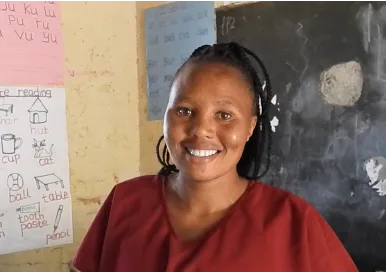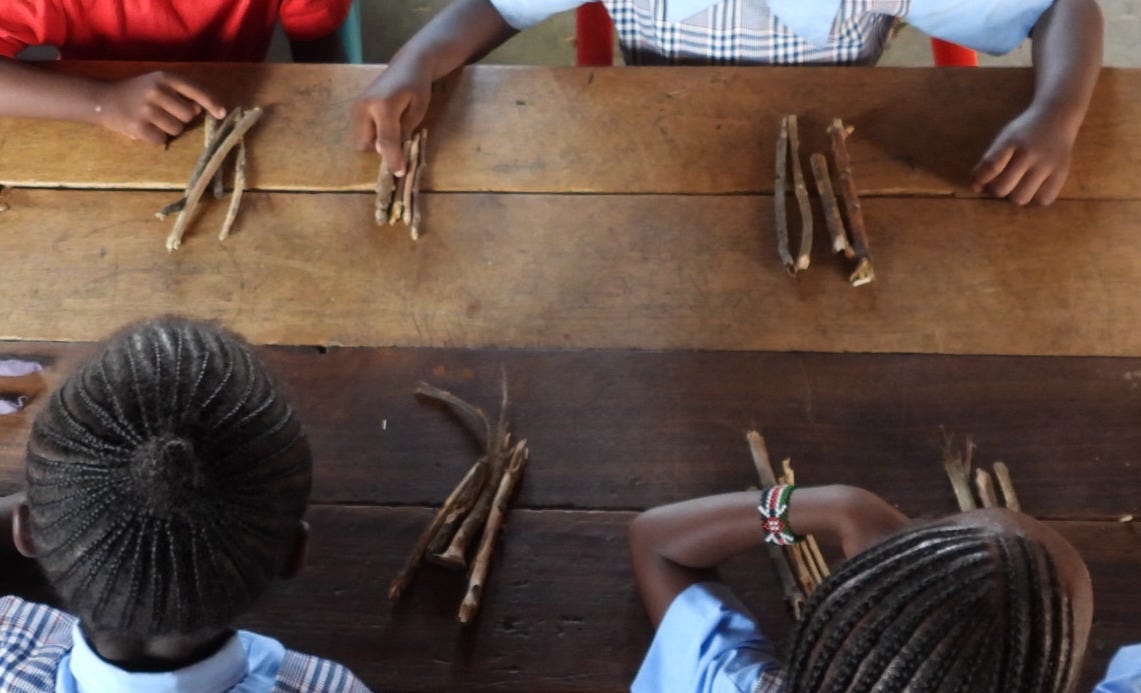Bridging the Gap: Nanyori’s Story and the Global Learning Crisis
Guest Post by Serena Seibel, co-founder of CLAIM
A guest post by Serena Seibel, co-founder of CLAIM
While travelling in Kenya, a Masai mother brought me to her daughter’s school in a village on the outskirts of the Masai Mara National Park. A bare courtyard led to the brick walls of a darkened classroom. Inside, worn wooden desks and benches faced a partially broken blackboard.
The mother showed me her daughter Nanyori’s math scorecard—4 out of 100 points. She explained she had adopted Nanyori at the age of 13 to save her from a forced marriage. Since then, Nanyori has attended school, yet after six years, her learning has barely progressed.
Staring at that desolate classroom, the questions haunted me. What future awaits Nanyori? She's nineteen years old, in 6th grade, and unable to do a simple math equation. What will her choices be? How long will the family continue to pay for her school attendance with so little to show for it? How many girls out there are like her?
Sadly, her story is not unique. She is one out of 70% of children worldwide facing “learning poverty”—defined as the inability to reach basic proficiency in reading and math by age 10, despite two-thirds being enrolled in school (UNICEF, 2024). Millions sit in classrooms daily, yet the quality of learning is so low that it can barely be accounted for. Several factors drive this crisis: limited resources, poorly trained teachers, lack of learning materials, and the additional strain of emergencies (Save the Children, 2024).
For girls, the statistics are even more alarming. In Sub-Saharan Africa, 1 out of 3 girls never completes primary school (UNICEF, 2024). Even those who do often face outdated teaching methods and large class sizes in which teachers are ill-equipped to provide adaptive support.
To further understand the need, I visited additional schools and watched lessons. In rooms void of teaching materials, a teacher would stand at the blackboard, speak, and the learners would either listen in silence or repeat in a chant-like way. There was little to no learner engagement, no place for collaborative work, and no critical thinking opportunities.
Nathaniel, a primary school director, described the challenges: “poor infrastructure, lack of equipment, and shortage of materials.” “Out of 50 learners, or during some terms even the whole school, only 10 families can afford the textbooks.” Agnes, a second-grade teacher, added. “I’ve never received teacher training since teachers' college (...) I also have 2 learners with physical disabilities in my class, but there is no specialised teacher in the area.”
As an educator, coming from a world of educational wealth where learners are fully engaged with learning through play, programming, projects, and the use of digital tools, the contrast was staggering. Education is moving forward at a rapid pace, yet the gap between high-quality education and educational poverty is increasing, with millions being left behind. Girls like Nanyori are left to passively grasp little content in under-resourced classrooms, where concepts are memorised and hold little meaning or relevance.
What are the consequences of this disparity? The ripple effects of girls’ education, or lack thereof, are far-reaching. Girls who have access to quality education experience higher lifetime earnings, contribute to national economic growth, and are less likely to be married early or suffer from poor maternal and child health outcomes. Conversely, learning poverty carries a heavy cost. According to the World Bank (2023), the global economic loss tied to learning poverty could reach 17% of today’s global GDP, around USD 21 trillion in lost potential earnings.
The question struck: how do we begin to address such a vast, systemic issue? We needed something that teachers of all academic levels could access and understand; something designed for them that would be practical and scalable. That’s how our initiative, CLAIM – Changing Learning to be Accessible, Inclusive, and Meaningful, was born.
It was clear that much of the online content was not adapted for these settings. Textbooks were too theoretical and required an academic level of understanding or unavailable resources. Many open-access online activities lacked step-by-step guidance—how could a teacher with more than 50 learners transform their teaching methods with games if they had never experienced play-based learning themselves? How could teachers with no digital literacy use online material that required unavailable resources?
To bridge this gap, we’ve created a simple, image-based, step-by-step teacher guide. With minimal text and activities using recycled or natural materials, it's accessible and easy to follow. Inspired by Finland’s renowned learner-centric approach, our instructional design is inclusive and adaptable. Delivered through a mobile app, it aims to empower teachers in even the most resource-scarce environments and make quality learning accessible.
Two years after meeting Nanyori, I returned to Kenya with a paper-based version of our guide and saw the results; classrooms came to life with play-based activities. Learners laughed and excitedly played math games with sticks, stones, and bottle tops while their smiles said it all. The learning environment had been transformed! Jane, a first-grade teacher, thanked us and said, “ It has been helpful for us to make learning easier, and grouping the learners has worked well. The learners are now able to communicate and collaborate. We are very grateful, and we need more support from you.”
With our test run in 5 schools, over 700 learners participated in engaging, high-quality learning opportunities—just a glimpse of what’s possible. We are currently looking for financial support to develop our solution as a mobile app to be able to reach countless teachers and learners worldwide. The resources would enable us to tailor our tool to different countries, regions, and languages, supporting teachers in emergencies and beyond.
This is just the beginning. We look forward to connecting with mission-driven investors and institutions supporting global education initiatives.
Serena Seibel
With a background in management and over a decade of leadership experience, Serena’s career took a new direction after starting an emergency school in Ivory Coast during the 2011 conflict. Now a passionate educator with a Master of Education and over eight years’ experience, she advocates for educational equity.





